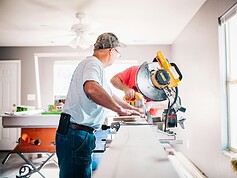
Outdoor spaces can work through the seasons when you set them up with practical features and materials that hold up through weather changes. A place that feels good in July often needs different support in January. A few adjustments can shift a backyard into something that stays useful through cold snaps, heat waves, or damp evenings. Think of it as building layers that you can adjust whenever the conditions change.
Plan for Shelter and Flexible Coverage
Rain, wind, and harsh sun can shut down a gathering fast, so some kind of cover helps people stick around. Many homeowners add fixed roofs or pergolas, but portable coverage works too. If you plan to buy a heavy duty canopy, you can set it up as needed and move it around to match the occasion. A movable shade structure helps during events where you want the grill, the kids’ corner, or the seating areas in different spots.
Some outdoor setups rely on shade cloth stretched between posts. It creates a softer look and adjusts easily when seasons shift. Fixed structures might give you better long-term stability, although they take more planning and usually need a layout that fits your yard’s shape. People with patios connected to the house often use French doors to move between indoor and outdoor areas, and a covered space near that entry point encourages guests to linger outside longer.
Heat Sources and Cold-Season Comfort
Cold evenings call for reliable warmth, even in warmer regions. A fire pit brings people together and extends the time you can spend outdoors. Pick a design that fits your yard’s layout. A simple steel bowl moves easily. A larger built-in unit suits people who host often and want a consistent setup.
Winter gatherings stay more comfortable when you add soft layers, like thicker cushions on chairs or a durable rug. People often forget about wind until a gust hits the food or cools everyone down. A privacy hedge, slatted partition, or tall planter can break the wind and shape a more sheltered zone. Illuminated planters can double as lighting when daylight fades early.
Summer Cooling and Sun Protection
Heat drives people back indoors fast unless you plan around it. Structures that create shade prevent surfaces from overheating and help keep guests comfortable. Retractable awnings, pergolas with adjustable slats, and umbrellas give you control over how much light reaches the seating area.
Fans mounted in undercover areas help circulate air during humid afternoons. Misters cool smaller patios when used sparingly. Native plants placed near gathering spots create natural cooling as they release moisture, and they also reduce maintenance needs. Many yards benefit from a garden bed positioned along the perimeter to soften harsh sunlight and bring in color.
Functional Zones for Cooking and Dining
Food anchors most gatherings. An outdoor kitchen helps you cook without running back and forth inside. It can be as modest as a countertop for prep and a grill, or something more built out with storage and refrigeration. Try to place it close enough to your indoor kitchen for convenience.
Dining areas feel better when they have enough room for movement. A dining table sized for your usual crowd avoids the cramped feeling that often happens with oversized furniture. If you need extra seating during larger events, a built-in bench attached to a wall or planter can fit more guests without taking up much space.
Lighting for Every Season
Soft, steady lighting helps guests see without glare. Many homeowners use string lights to bring a warm atmosphere to patios and decks. They stretch across beams or between trees to create simple overhead illumination. LED lighting works for steps, paths, and darker corners.
Some yards call for accent lights pointed at plants or art pieces. Others benefit from lights tucked under floating steps for safety. Pathway lighting helps on winter evenings when the sun sets early. Outdoor audio can pair with lighting to create a fuller experience, as long as the volume stays controlled so the sound doesn’t overwhelm conversations.
Water, Greenery, and Extra Features
Some homeowners add water features for movement and background sound. A small fountain near a seating area can soften traffic noise or chatter from neighboring houses. Larger yards might fit a zero-edge pool, though it requires planning, ongoing maintenance, and a design that makes sense for the space.
If you want a low-key option, try a simple bubbling urn near a corner of the patio. Movement from water attracts birds and creates a relaxed atmosphere for slow gatherings. People who prefer a quiet garden often arrange native plants around a walkway or near a shaded corner to introduce texture without raising maintenance demands.

Connect Indoor and Outdoor Living
Outdoor areas feel more integrated when indoor and outdoor traffic flows smoothly. People often arrange undercover areas directly outside main living spaces so guests can drift in and out. Clear paths prevent bottlenecks during larger gatherings, and a few pieces of patio decor guide guests to the right part of the yard.
Some homeowners hire a landscape architect when reshaping larger yards or when multiple features need alignment. Projects like retaining walls, stepped terraces, or major plant installations benefit from expert planning. Smaller yards often come together through DIY choices that mix seating, lighting, and greenery.
In Closing
Seasonal comfort comes from thoughtful layers rather than one big feature. Shade, warmth, airflow, lighting, storage, and greenery all influence how people experience the space through the year. A combination of practical tools and flexible layouts lets you adjust for changing conditions. Outdoor areas set up this way stay welcoming for quiet family dinners, weekend gatherings, or relaxed evenings with a few friends. If you approach the space step by step, you can shape a yard that feels ready for any season.





